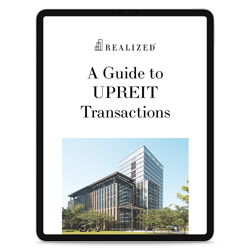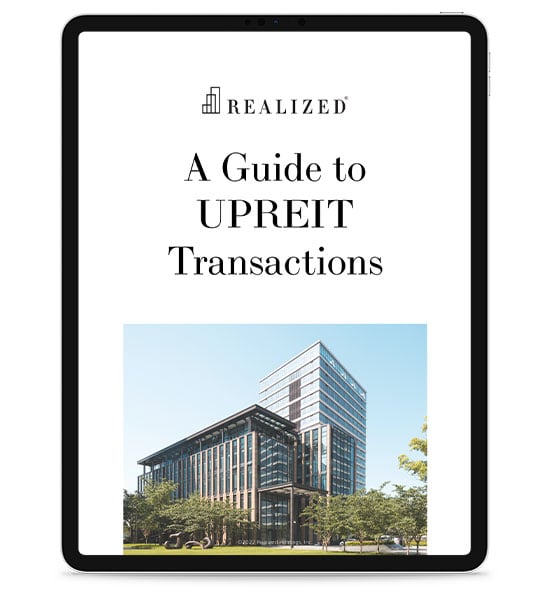
Real Estate Investment Trusts (REITs) are securities that may provide a simpler route to real estate investing exposure than that of direct real estate. This article will discuss the difference between non-listed and publicly listed REITs. Both provide similar offerings but with differences in liquidity and costs.
Non-Listed and Publicly Listed Overview
A REIT is an investment vehicle focusing on investing the majority of its assets into real estate. It distributes at least 90% of its taxable income as distributions. Many REITs are securities that are managed by an experienced team. Unlike direct real estate, REITs are passive investments.
A public non-listed REIT is not listed on a national exchange. Being non-listed doesn't mean the REIT never trades. It is more a reference to the REIT intentionally not being listed on a national exchange.
Investors can still buy into a non-listed REIT directly and, in some cases, through a secondary market.
The public in a public non-listed REIT means it is registered with the SEC, just like a public exchange-listed REIT. With SEC registration comes adherence to state securities laws and regulations pertaining to the North American Securities Administrators Association (NASAA) Statement of Policy Regarding REITs. SEC registration also means the REIT must regularly file financial statements.
REITs traded on public stock exchanges are fairly popular. These REITs trade just like publicly listed stocks.
Cost And Fees
Most securities that are not listed on a public exchange tend to have higher transaction costs than publicly listed securities. For example, the cost to trade a publicly listed stock on a public exchange is mainly up to broker commissions. These commissions are generally just a few dollars, even for trading several thousand shares of stock. This is no different for a REIT on a public exchange.
A public non-listed REIT can have a number of different costs. These include brokerage commissions and trail fees, which can vary by type of REIT, and costs based on the share class.
Those are costs related to entering the investment, usually where most costs are incurred for investors.
There may be costs for exiting the investment. However, depending on the investor agreement, there may be steep costs for exiting the REIT before a required holding period has expired. It’s possible the redemption may be at a discounted price and not necessarily at a "cost."
Investors may incur fees for holding the REIT. These fees are based on the REIT’s NAV (net asset value), and some examples are 2% of NAV monthly or 5% of NAV quarterly.
Public non-listed REITs often have investment minimums, which most publicly listed stocks do not. For non-listed REITs, investment minimums can typically range from $1,000 to $2,500.
Liquidity
Exchange-listed REITs are more liquid than public non-listed REITs. There are a few reasons for this, mainly because of reduced friction for entering/exiting the position on an exchange. By friction, we mean transaction-related costs for entering and exiting, ease of finding the REIT, and the ability to buy/sell the REIT without a material impact on the bid/ask spread.
According to NAREIT, Public Non-Listed REITs are intentionally not listed on national securities exchanges. Liquidity options vary and may take the form of share repurchase programs (by the REIT company) or secondary marketplace transactions, but are generally limited. Certain “Daily Net Asset Value (NAV) REITs” may provide enhanced liquidity by offering periodic, repurchase options at net asset value. Traditionally, public non-listed REITs have aimed at providing liquidity through an event such as listing on a national securities exchange, selling all or substantially all its assets, or entering into a merger or business combination.
Choosing a non-listed or listed REIT can depend on what an investor is looking for. These two types of REITs are not exclusive. An investor can choose the liquidity and simplicity of a publicly listed REIT for diversification reasons. The same investor may also be interested in a public non-listed REIT because it has a unique deal offering that suits the investor.
Just be aware that non-listed REITs generally require longer holding periods than their publicly listed brethren. Otherwise, high costs may be incurred to exit early.
This material is for general information and educational purposes only. Information is based on data gathered from what we believe are reliable sources. It is not guaranteed as to accuracy, does not purport to be complete and is not intended to be used as a primary basis for investment decisions. It should also not be construed as advice meeting the particular investment needs of any investor.
The actual amount and timing of distributions paid by programs is not guaranteed and may vary. There is no guarantee that investors will receive distributions or a return of their capital. These programs can give no assurance that it will be able to pay or maintain distributions, or that distributions will increase over time.
There are risks associated with REITs and may include but are not limited to the following:
They may be illiquid with no secondary market.
Potential difficulty discerning between routine interest payments and principal repayment.
Redemption price of a REIT may be worth more or less than the original price paid.
Value of the shares in the trust will fluctuate with the portfolio of underlying real estate.
There is no guarantee you will receive any income.
Involves risks such as refinancing in the real estate industry, interest rates, availability of mortgage funds, operating expenses, cost of insurance, lease terminations, potential economic and regulatory changes.
This is neither an offer to sell nor a solicitation or an offer to buy the securities described herein. The offering is made only by the Prospectus.



